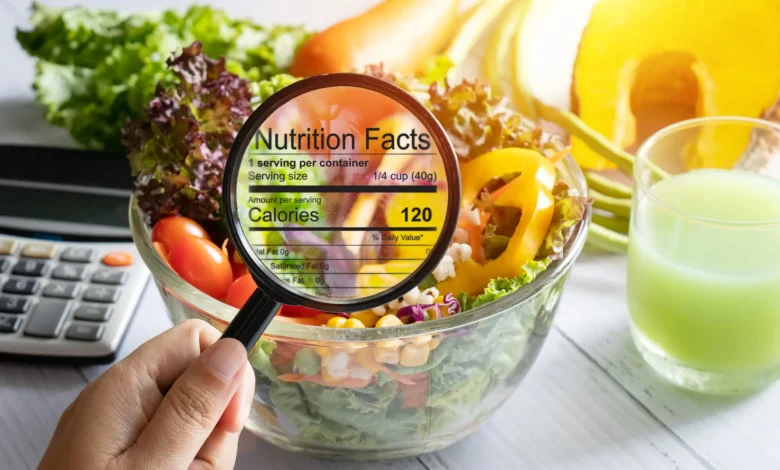Facts
Unlocking Nutritional Wisdom: A Deep Dive into Nutrition Facts

Embarking on a journey towards healthier eating involves deciphering the wealth of information presented on nutrition labels. In this comprehensive guide, we’ll unravel the key components of nutrition facts, empowering you to make informed decisions about the foods you consume. Presented in a bullet-point format, here’s an in-depth exploration of various nutrition facts:
- Serving Size Significance:
Portion Awareness: Understand the specified serving size to accurately assess nutritional content.
Portion Control: Practice mindful eating to align with recommended serving sizes. - Caloric Content Insights:
Total Calories: Consider the total caloric content per serving for overall energy intake.
Caloric Needs: Evaluate how the caloric content fits into your daily energy requirements. - Macronutrient Breakdown:
Carbohydrates Exploration: Identify the amount of carbohydrates, including dietary fiber and sugars.
Protein Assessment: Evaluate protein content for muscle support and satiety.
Fats Differentiation: Understand the types of fats present, emphasizing healthier unsaturated fats. - Micronutrient Awareness:
Vitamins and Minerals Overview: Explore the presence of essential vitamins and minerals.
% Daily Value Utilization: Use % Daily Value to gauge a food item’s contribution to overall nutrient intake. - Fiber Focus for Digestive Health:
Importance of Dietary Fiber: Recognize the role of fiber in promoting digestive health and satiety.
Choosing Fiber-Rich Foods: Prioritize foods high in fiber for improved digestion. - Protein Quality Considerations:
Complete vs. Incomplete Proteins: Differentiate between protein sources and strive for variety.
Balanced Protein Intake: Ensure an adequate protein intake to support overall health. - Healthy Fats Decoding:
Understanding Fat Types: Differentiate between saturated, unsaturated, and trans fats.
Choosing Healthy Fats: Opt for foods rich in healthy fats, such as those containing omega-3 fatty acids. - Sugar and Sweeteners Exploration:
Natural vs. Added Sugars: Differentiate between naturally occurring sugars and those added during processing.
Artificial Sweeteners Awareness: Consider the impact of artificial sweeteners on your diet. - Sodium Savvy Choices:
Limiting Sodium Intake: Be conscious of high sodium content, especially in processed foods.
Opting for Low-Sodium Alternatives: Choose products with lower sodium levels. - Allergen Identification Insights:
Common Allergens Recognition: Familiarize yourself with common allergens listed on food labels.
Avoiding Cross-Contamination: Be vigilant about potential cross-contamination risks for allergens. - Understanding Food Additives:
Preservatives and Additives Awareness: Recognize common additives and their purposes in processed foods.
Colorings and Flavorings Consideration: Be mindful of artificial colorings and flavorings. - Smart Shopping Strategies:
Label Reading Habits: Dedicate time to read labels while grocery shopping for informed choices.
Product Comparison Skills: Compare similar products to select those with superior nutritional profiles. - Customizing Nutrition for Individual Needs:
Personalized Nutritional Goals: Tailor your diet based on individual health and fitness objectives.
Addressing Specific Dietary Needs: Accommodate dietary preferences, such as vegetarianism or gluten sensitivity. - Meal Planning with Nutritional Precision:
Balanced Meal Construction: Create well-rounded meals encompassing a variety of nutrients.
Preventing Nutrient Gaps: Plan meals to mitigate deficiencies in essential nutrients. - Cooking Techniques for Nutrient Preservation:
Healthy Cooking Methods Embrace: Opt for cooking methods that preserve nutrient content, such as steaming or roasting.
Nutrient Retention Awareness: Minimize nutrient loss during cooking to maximize nutritional benefits. - Recognizing Misleading Marketing Tactics:
“Low-Fat” Traps: Be cautious of products labeled “low-fat” that may compensate with added sugars.
“Organic” vs. Nutritional Value: Understand that “organic” doesn’t guarantee higher nutritional value. - The Role of Supplements:
Supplement Considerations: Assess the need for supplements based on individual dietary gaps.
Professional Consultation: Seek guidance from healthcare professionals when considering supplements. - Lifestyle Integration Practices:
Balancing Treats: Enjoy occasional treats while maintaining an overall balanced diet.
Sustainable Habits Cultivation: Adopt nutritional habits that are sustainable for long-term health. - Staying Informed Strategies:
Continuous Learning Approach: Stay updated on nutritional trends and research.
Recipe Modification Skills: Learn to modify recipes for improved nutritional content. - Building a Supportive Community:
Knowledge Sharing: Share nutritional insights with friends and family.
Community Engagement: Connect with communities or online groups focused on informed eating.
Understanding nutrition by the numbers empowers you to make choices aligned with your health goals. By decoding labels, embracing nutrient-rich foods, and cultivating informed habits, you pave the way for a healthier and more nourished lifestyle. Remember, informed eating is a journey, and each mindful choice contributes to your overall well-being.




